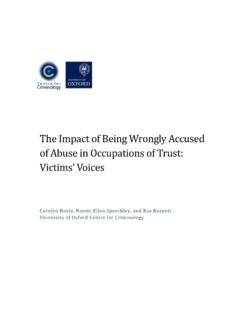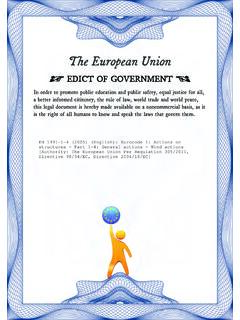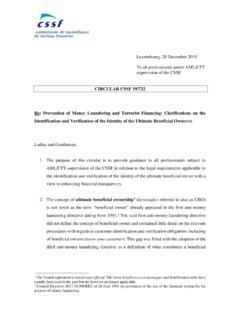Transcription of The relationship between supermarkets and suppliers: …
1 The relationship between supermarkets and suppliers: What are the implications for consumers? This report was produced with the financial assistance of the European Union. The contents of this document are the sole responsibility of Consumers International and can under no circumstances be regarded as reflecting the position of the European Union. 1. Table of Contents Introduction and summary .. 2. What is buyer power? .. 2. Abuses of buyer power .. 5. What do these abuses imply for suppliers? .. 7. The rise of retailers' own brands and the loss of independent brands .. 7. Low prices, uncertainty and sustainability of supply .. 9. What do these abuses imply for consumers? .. 11. The consumer benefits of supermarkets .. 11. Detriments to consumers .. 11. The SPQR concept .. 12. Price.
2 12. Innovation and range .. 13. Confusing pricing .. 15. Summary .. 16. Ethical considerations .. 16. Impacts on workers' rights .. 17. What have the regulatory authorities done? .. 20. Conclusion .. 22. Acknowledgements: We are very grateful for the help given by: Elise Dalley and Zoya Sheftalovich, CHOICE Australia;. Emese Guly s, Association of Conscious Consumers, Hungary; Karianne Christiansen, The Norwegian Consumer Council; Tom Hind, NFU (National Farmers Union in the UK); Professor Roger Clarke of Cardiff Business School; Fiona Gooch, Traidcraft; and Tania Hurt-Newton. 1. Introduction and summary Consumers are the final link in food supply chains which are increasingly international. The processes and dynamics operating along such chains affect consumers in both positive and negative ways.
3 Over at least 30 years, supermarkets in developed economies round the world have acquired an increasing share of grocery markets, and in doing so, have increased their influence over suppliers . what food is grown and how it is processed and packaged with impacts reaching deep into the lives and livelihoods of farmers and workers worldwide. At national level in many countries, a large share of the grocery market is frequently in the hands of only a handful of supermarkets . One of the consequences of this concentration is a growing imbalance of bargaining power within food supply chains. The economic and social effects on producers and processors are increasingly recognised. However, the consequences of the power of supermarkets over their suppliers also affect consumers, through impacts on innovation, reduction of choice and higher prices.
4 These effects are often overlooked. So too are impacts on the sustainability of consumption and production. supermarkets characteristically say that they merely respond to consumers' wants and that, if they get it wrong, consumers will simply go elsewhere. However, it can be argued that they also play a key role in shaping consumer demand and that, because of the power they wield in the marketplace, they have a strong influence over what consumers buy, and how and where they buy it. supermarkets can be seen as gatekeepers rather than passive transmitters of consumers' wishes, and their gate- keeping role can work to the detriment of consumers and suppliers alike. The argument is sometimes advanced that the new phenomenon of multi-channel shopping will curb the market power of supermarkets ; that this is apparent not just in the rise of farm shops and direct marketing but also in the wider use of on-line distribution of food products by non- supermarket businesses.
5 Some also hope that the increased use of social media will intensify the degree of public scrutiny of retailers and indeed of all major businesses. But such developments are relatively small in scale and will take time to gather pace. This paper introduces some of the key issues concerning supermarket buyer power and explores the implications for consumers and suppliers. It finds that more analytical effort is required among competition authorities, academics and independent commentators to develop methods of measuring buyer power and its effects more accurately, both theoretically and in practice. Buyer power is, objectively, a complex and difficult issue. The paper concludes that effective measures to prevent unfair business-to-business (B2B). commercial practices and the resulting detriments to both small-scale producers and consumers are urgently needed.
6 Remedies should be based on a fundamental principle of fair dealing and should be enforceable and binding. All suppliers (in national, regional and global supply chains) should have effective recourse to protection. Consumer organisations have an important role to play in mitigating the negative effects of buyer power. What is buyer power? Buyer power is essentially the ability of a buyer to obtain more favourable buying terms than would be possible in a fully-competitive market. Most people will understand that, in most traded goods markets, bigger buying volumes command better buying prices, but what explains the ability of large supermarkets to go on extracting better terms from suppliers after economies of scale have been exhausted? The explanation is abuse of buyer power. 2. supermarkets ' buyer power arises from their retailer power: often commanding upwards of 60 per cent of domestic grocery sales,1 supermarkets collectively are of an importance to suppliers which enables them effectively to determine what will and will not be stocked, and on what terms: sources, quantity, quality, delivery schedules, packaging, returns policy, and above all, price and payment conditions.
7 There are, of course, other actors in grocery supply chains, some very large, such as Procter &. Gamble, Nestl , and Unilever. But even for these, the dominance of supermarkets is daunting, and the imbalance of bargaining power striking. Except through supermarkets , brand owners large or small have only limited access to end consumers. Producers of non-branded goods, most notably agricultural producers, have even less access and less ability to bargain for it. supermarkets ' buyer power and retailer power are now mutually reinforcing. As their retail market share increases, they are able to secure ever better deals from their suppliers. And, as buying prices fall, retail prices fall too, giving them yet more market share. Buyer power would not exist without retailer power, and vice versa.
8 Figure 1 below illustrates the circular relationship . Tania Hurt-Newton 1. See Table 1. Such concentration is of long standing. See also The Abuse of supermarket Buyer Power in the EU Food Retail Sector: Preliminary Survey of Evidence, Vander Stichele and Young, SOMO, 2008. The table on shows that, as far back as 2005, 14 EU. Member States showed CR5 ratios (the market share commanded by the top five firms) greater than 60%, and 11 Member States with CR5 greater than 70%. Concentration has risen steadily every year since then. 3. The concentration of national grocery markets in a number of countries is shown in Tables 1a and 1b below. The right-most column in each table sets out the concentration ratio in each country. This represents the combined market share of the top X supermarkets .
9 Table 1 shows, for example, that in Austria, 82 per cent of the grocery market is shared by the top three supermarkets . Table 1a: Selected national food market concentration ratios 2008 or later2. Country Year Percentage of Concentration national food market ratio European Union Austria 2009 82 3. Belgium 2011 71 5. Denmark 2009 80 5. Finland 2011 88 3. France 2009 65 5. Germany 2011 85 4. Greece 2009 50 5. Italy 2009 40 5. Netherlands 2010 65 5. Portugal 2011 90 3. Spain 2009 70 5. UK 2011 76 4. Rest of World Australia 2011 71 2. Canada 2011 75 5. Norway 2011 81 3. Switzerland 2011 76 3. Table 1b: Selected national food market concentration ratios 2005-2006. Country Year Percentage of Concentration national food ratio market Estonia 2005 79 5. Ireland 2006 81 5. Lithuania 2005 76 5.
10 luxembourg 2005 72 5. Slovenia 2005 82 5. Sweden 2006 95 4. USA 2006 35 4. i Sources In the trade of agricultural products, the bargaining power of the supermarkets is reinforced by fragmentation on the supply side. Whereas the retail grocery market is characteristically served by only four or five large supermarket groups,3 the number of food and food-product producers runs into 2. It proved impossible to bring the figures to a single date, or to establish a common concentration ratio. Table 1a lists countries where figures for 2008 were obtainable, while countries with older data appear in Table 1b. The older data suggests that high concentration ratios are of long standing. 3. In a number of EU Member States, buying groups have emerged to serve multiple supermarket groups across borders.
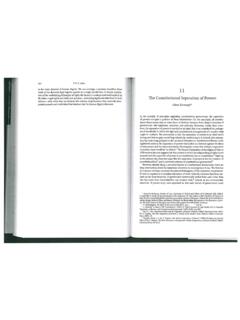
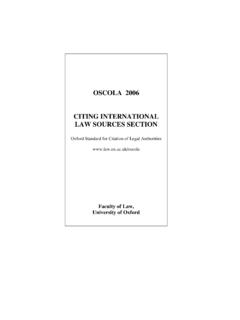

![[103R] THE 2019-2020 PRICE MEDIA LAW MOOT COURT ...](/cache/preview/0/4/6/0/a/d/7/4/thumb-0460ad74e87ef78c08fd83d0d32ab016.jpg)
![[103A] THE 2019-2020 PRICE MEDIA LAW MOOT COURT ...](/cache/preview/e/0/9/1/0/f/9/6/thumb-e0910f964b396d31bc82ce1e5ba8e0e8.jpg)

